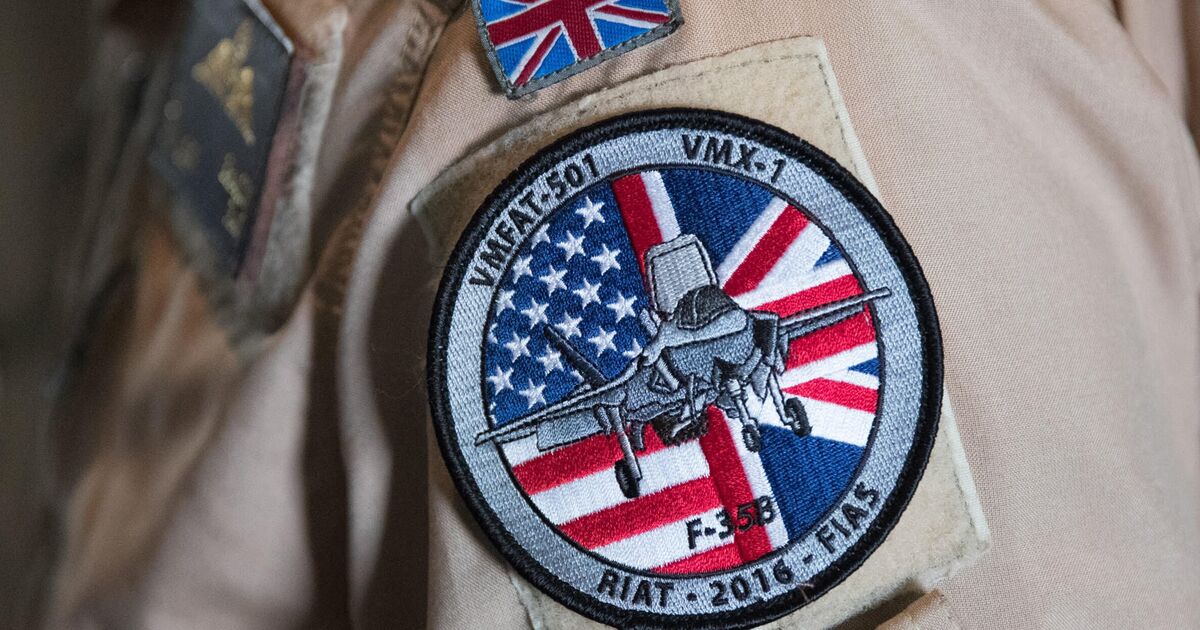All RAF pilots are to be trained in the US under radical proposals which will also see a “complete recalibration” of the Army.
Last night former defence secretary Gavin Williamson branded the idea to permanently offshore the training of pilots as “reckless”, warning that it would mark the loss of an important capability and result in Britain having to go “across the Atlantic with a begging bowl” in times of conflict.
Current plans also will see the Army abandon heavy artillery for drones, and the closure of many bases at a time when troops are quitting in droves.
Soldiers opting for a better paid life on civvy street combined with those who are injured or unfit have left the Army with an effective fighting force of just 58,800 soldiers today. The target is 73,000.
Last night Luke Coffey, of the US-based Hudson Institute and former aide to defence secretary Liam Fox, warned of US concerns that the small number of troops was affecting the pool from which Britain’s Special Forces – heavily relied upon by Washington DC – are drawn.
“I can tell you that the size of the British army is causing concern in the US,” he said.
It comes as former Nato secretary general and Labour peer George Robertson leads a root and branch review to deliver savings.
With Britain’s military at its smallest size in history, his team is seeking to identify areas where the US and Nato can allow the UK to utilise their assets,
Military chiefs have been warned that the Strategic Defence Review will bring “radical changes”.
The plans have left senior military sources asking whether the UK “can still claim to have a functioning Armed Forces.”
If adopted, these will see RAF pilots train in the US before returning to undergo standard RAF conversion courses.
Some 27 RAF pilots are already being trained in the US and Italy at a cost of £55m, after problems with Hawk T2 trainer jets left half the fleet being grounded.
But transferring all training to the US permanently will have serious consequences.
“You cannot surrender our capability to decide who we will train and in what quantity. Our allies will think we are giving up,” said Gavin Williamson MP, who was defence secretary from 2017-19.
“It means losing all control over the process. And if you cannot take a pilot all the way from start all the way to finish effectively you have lost a capability which will take decades to grow again.
“If we ever find ourselves in armed conflict, we will be competing for resources with another nation.
“We need to have the ability to turn the valve and increase the number of pilots. That won’t be possible if we’re zooming across the Atlantic with a begging bowl, as Ukraine is forced to do. ” (continues…)
More collaboration with Nato will also determine the shape of the Army, with its special operations brigade, the Rangers, and the Parachute Regiment integrated into Nato’s ‘Very High Readiness Task Force’.
The Royal Marines, meanwhile, will provide maritime special operations for Nato and be given Tier 2 special forces status.
Chancellor Rachel Reeves allocated an extra £3.1 billion last week to the capital budget for the armed forces over the next two-years.
But it is not yet clear whether the money will be “passported” to pay the pledged £3bn to Ukraine which, former defence secretary Ben Wallace said, would actually mean “it is in fact a cut to the core budget”.
That won’t help stem the Army’s retention crisis which has left just 71,800 trained Army personnel as opposed to the 73,000 target. (continues…)
Of those , more than 13,000 soldiers are medically non-deployable due to injury or long-term sickness and cannot go to war.
Neither will retention be helped by Labour plans to impose VAT on independent school fees, affecting the Continuity of Education Allowance which allows soldiers to give their children educational consistency in boarding schools, rather than move them from pillar to post.
Those who use CEA most aren’t better paid colonels or brigadiers, but rather sergeants – the backbone of the British Army,
The review’s answer is to “completely recalibrate” the Army, leading to more bases being closed and engineers and logistics reduced to support a shrinking force.
Except for the purchase of 14 Swedish Archer howitzers, Army heavy artillery provided by 29 Commando and 7 Para Royal Horse Artillery is being phased out. With the UK now unable to deliver guns amphibiously or drop them from the air, and assets such as AS90 tracked artillery gifted to Ukraine, these units will focus on drone warfare. (continues…)
The Royal Navy is also facing challenges, with Royal Marines almost 1,000 troops short.
While defence secretary in 1998, Robertson stated that the Royal Navy needed 20 frigates. Today the surface fleet is down to just nine Type-23 frigates.
And delays to Type 26 and Type 31 replacements mean that, when the carrier HMS Prince of Wales sets sail to the Indo-Pacific next year , it will be flanked by escorts from Nato counties and a Norwegian tanker.
Former defence secretary Penny Mordaunt said: “It is deeply concerning to hear some of the options under consideration. Bolster defence and you don’t just get security, you get prosperity too. The Government must give our armed forces stability and sustainability.”
An MoD spokesperson said: “We won’t comment on speculation. The Strategic Defence Review will be published in the first half of 2025 and will establish the roles, capabilities and reforms required by UK Defence to meet the challenges, threats and opportunities of the twenty-first century.”
Checkout latest world news below links :
World News || Latest News || U.S. News
The post RAF Pilots to be permanently trained in US under radical defence review plans… appeared first on WorldNewsEra.

